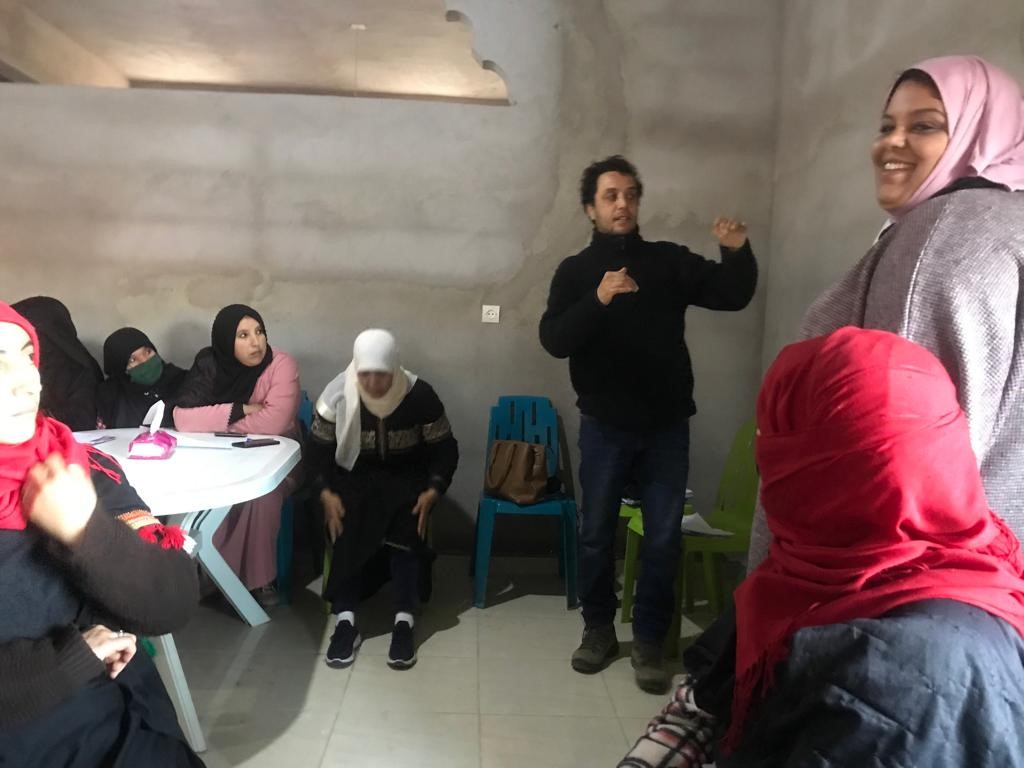On Tuesday 4, January 2022, I went with Youssef Tahiri, HAF Project Manager for the Youth Conservation Corps program, to see the khettara, or irrigation system, in Tifrka village, Adar commune. Mr. Hassan Ouakzin and Mr. Mohamed Bouylla showed us where it is. It is still functioning, and a small quantity of water is still running from it into a reservoir. The wells of the khettara are not as accessible as they should be, and you cannot see the water running. They have been restored but not sufficiently or properly.
The khettara/touragh consists of 13 or 14 wells, which we estimated were 12 to 15 meters apart. The mother spring must be connected to the ravine that comes from the mountain.
I also explored the piece of land where HAF is planning to plant trees with the cooperation of Tiferki village. I asked Mr. Mohamed about the history of that place, and he told me it has been a battlefield between his Amazigh tribe and an Arab one called Jellal. There had been dead fighters from both parties. In addition, I found a flat stone on which there is engraving that looks like a pair of sandals. So it must be an old, historical site. If HAF can plant trees there, it will also be a chance to value and promote that place culturally, and it will be a source of pride for the villagers, an integration of what is historical, cultural, and agricultural about the place.
Youssef told me that the locals did not want HAF to dig any well around the khettera as it may affect it forever. In this case, HAF can still dig a well at the foot of the mountain, exactly in line with the mother spring of the khettara, but to the right. The top of the site can be used to dig reservoirs as a technique of gathering water at times of flash rains.
Mr. Mohamed and Mr. Hassan showed us where a well used to be, and I also noticed there is a palm tree, which proves there is water there. I heard the existence of a palm tree means there is water around because the palm tree always gets water for itself by sending its roots deeper until they find water. This well is located down the khettara and down the ravine. So HAF may try this option of digging a well 100 meters or farther from the khettara.
Youssef, Bouchra Zine (HAF Field Officer), and I approached the cooperative in Tifrka to allow me to help with community dialogue. We worked cooperatively and we were successful in starting participatory meeting and planning.

Stone with sandal engraving, khettara site in Tifrka village. Photo by: Jamal Maghiouzi
This article was completed with the support of the United States Agency for International Development (USAID) Dakira Program, and the High Atlas Foundation is solely responsible for its content, which does not necessarily reflect the views of the USAID or the Government of the United States.






